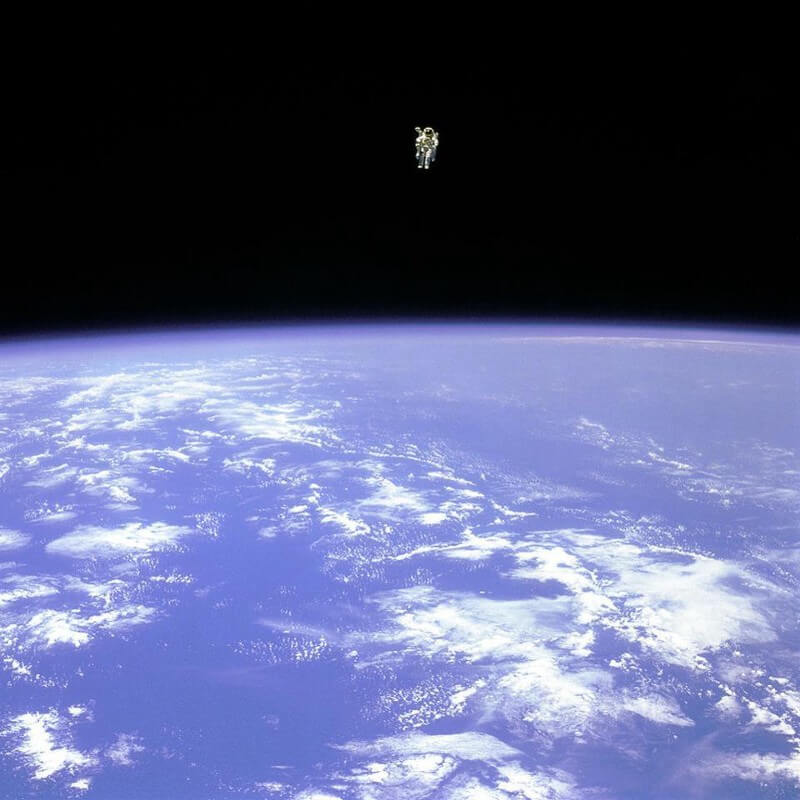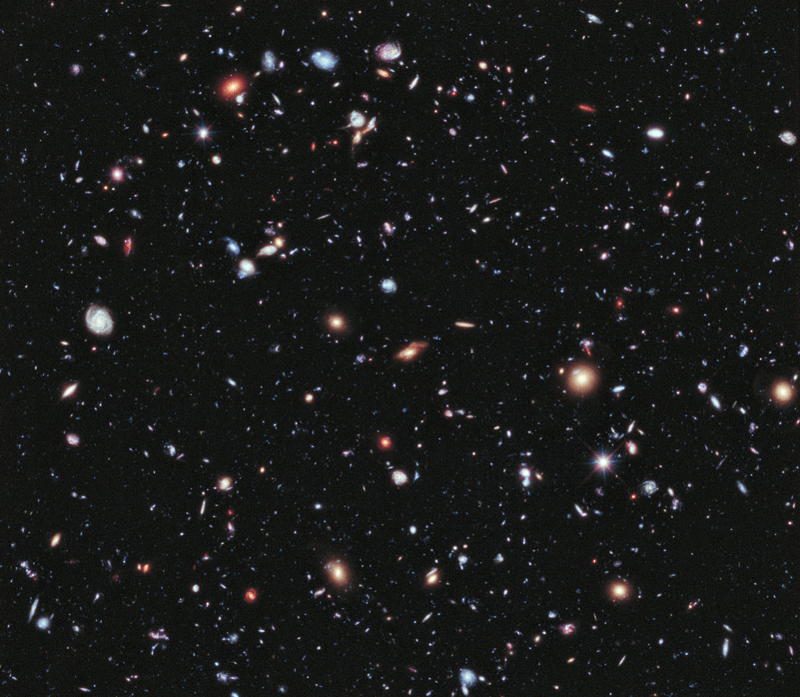- Get link
- X
- Other Apps

Perhaps in the history of the universe there was no other intelligent, technologically advanced species of beings other than humans. When you take into account that in the Milky Way there can be 400 billion stars, each with three potentially inhabited worlds, and in the universe - about two trillion galaxies, intelligent life seems quite common. But intuition may well fail us, because our assumptions are often unscientific. The magnitude of unknowns, which can be hidden in abiogenesis, evolution, long-term adaptation and other factors, does not allow us to make an exact equation of life. There is an astronomical number of possibilities for developing a reasonable, technologically advanced life, but the enormous uncertainty makes it quite possible that people are the only space inhabitants.
In 1961, scientist Frank Drake presented the first equation predicting how much the cosmos of civilizations can conquer in the universe. He relied on a series of unknown quantities that he could estimate approximately, and eventually named the approximate number of technologically advanced civilizations that existed in the past and in the present, in our galaxy and in the observable universe. It's been 55 years, and today some of these values allow us to make more accurate predictions.
First, our understanding of the size and scale of the universe has greatly improved. Now we know, thanks to observations of space and terrestrial observatories covering the entire spectrum of electromagnetic wavelengths, how great the universe is and how many galaxies there are in it. We began to understand better how the stars form and function, and the deeper we peer into the cosmic abyss, the more accurately we estimate the number of stars in the universe. There were a lot of stars in the Universe - about 10 24 - and, based on this number, we can estimate the chances of the appearance of life for 13.8 billion years.

We are used to wondering how many stars have planets at their side, yet solid and with quite an interesting atmosphere similar to ours, and how many such planets are at a suitable distance from their star, so that liquid water is on the surface. For a long time we were only amazed at this. But thanks to the Kepler space telescope, we learned a lot:
- 80-100% of stars possess a planetary system or planets;
- 20-25% of these systems have a planet in the "habitable zone" in which water will remain in the liquid state on the surface;
- 10-20% of these planets are similar to Earth in size and mass;
Thus, in the universe there will be about 10 22 potentially inhabited earth-type planets with suitable conditions.
Moreover, almost all these planets will be enriched with heavy elements and ingredients necessary for life. Looking at the interstellar medium, clouds of molecular gas, the centers of distant galaxies, we see all the elements of the periodic table - carbon, nitrogen, oxygen, silicon, sulfur, phosphorus, copper, iron and much more. Looking at meteors and asteroids in our own solar system, we find not only these elements, but also their organic formations - sugars, benzene rings and even amino acids. In other words, in the universe there should be not just 10 22 potentially inhabited planets, but 10 22 planets with elements necessary for life.

But on this our optimism ends. If, of course, we will be honest and scrupulous. Because in order to develop a developed civilization, there must be three monumental events:
- Abiogenesis - when raw materials associated with organic processes, suddenly turns into "life."
- Life must survive and survive billions of years on the planet in order to acquire such properties as complexity, multicellularity, differentiation and "reason."
- Finally, intelligent life should become a technological civilization, either to declare its presence in the universe, or to go beyond its own home and explore the universe, or to hear and discover other forms of intelligence in the universe.
When Carl Sagan introduced "Space" in 1980, he stated that it would be prudent to give each of these three steps a 10% chance of success. If this were correct, there would be more than 10 million intelligent alien civilizations in the Milky Way galaxy.
There are those who say that in total these three steps have the probability of happening less than in 10 -22 . But this in itself is a ridiculous statement, based on nothing. Abiogenesis can be a common phenomenon; it could have happened many times on Earth, on Mars, Titan, Europe, Venus, Enceladus, or even beyond our solar system. But it can be such a rare process that even if we created one hundred clones of the young Earth - or a thousand, or a million or more - our world could become the only planet on which life appeared.

And even if life really does appear, how likely is it that it will survive and prosper for billions of years? Will the scenario of catastrophic warming, like on Venus, be the norm? Or a scenario of catastrophic freezing and atmospheric losses, like on Mars? Or will life ultimately poison itself by its existence, as it was on Earth two billion years ago? And even if life survives for billions of years, with what frequency will Cambrian explosions occur, when huge, multicellular, macroscopic plants, animals and mushrooms began to dominate the planet? This can be a relatively common or rare scenario, occurring either in 10% of cases, or in general, almost not happening.
And even if we admit all this, how likely is the appearance of a technologically developed, using instruments and launching a missile like a human being? Complex reptiles, birds and mammals, which can be considered clever in many respects, exist for tens and hundreds of millions of years, but modern humans appeared less than a million years ago, and "technologically developed" became in the last century. Will there be a 10% chance that, having overcome the previous stages of development, will you become a cosmic civilization? It is hard to believe. And we do not know, in truth.
We know that intelligent life in the universe should appear quite often (10 22 ). And we know that there is a small chance to become a space conquering space. But we do not know what this chance is - 10 -3 , 10 -20 or 10 -50 . We need the data. And no assumptions or statements will replace them. We need to find a life to know for sure about its existence. All the rest is nothing more than ordinary speculation.
The article is based on materials .
- Get link
- X
- Other Apps
Comments
Post a Comment